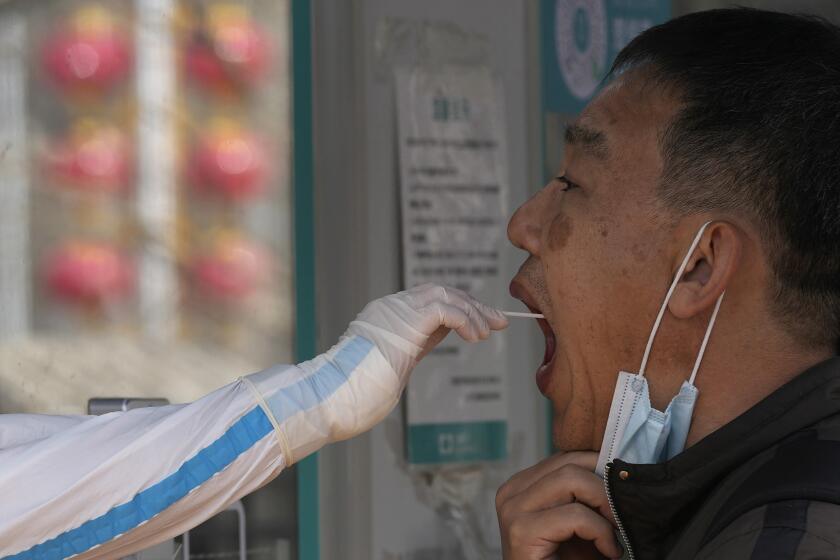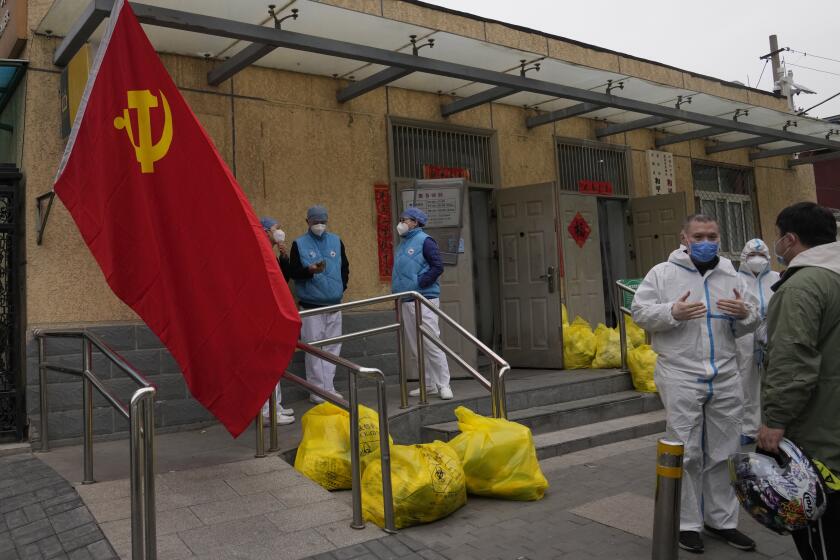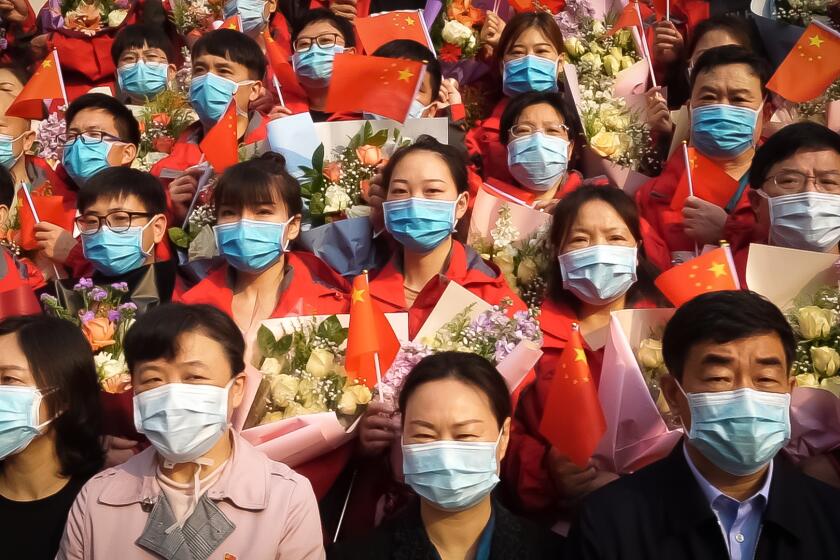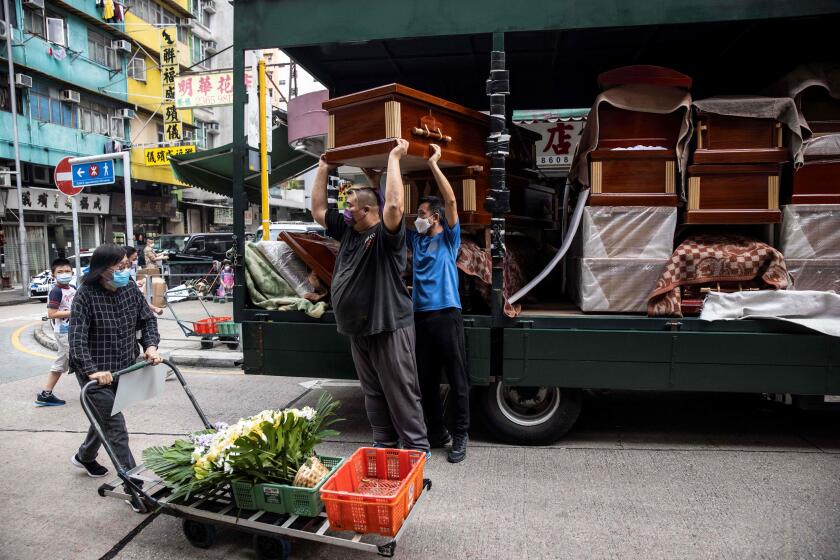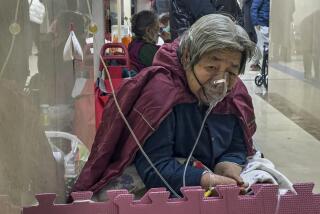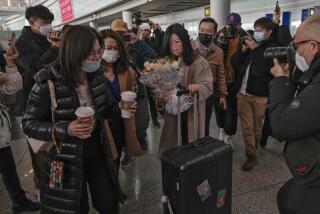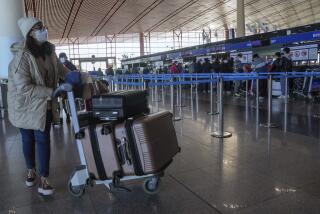China tries to limit the economic blow of Shanghaiâs COVID lockdown
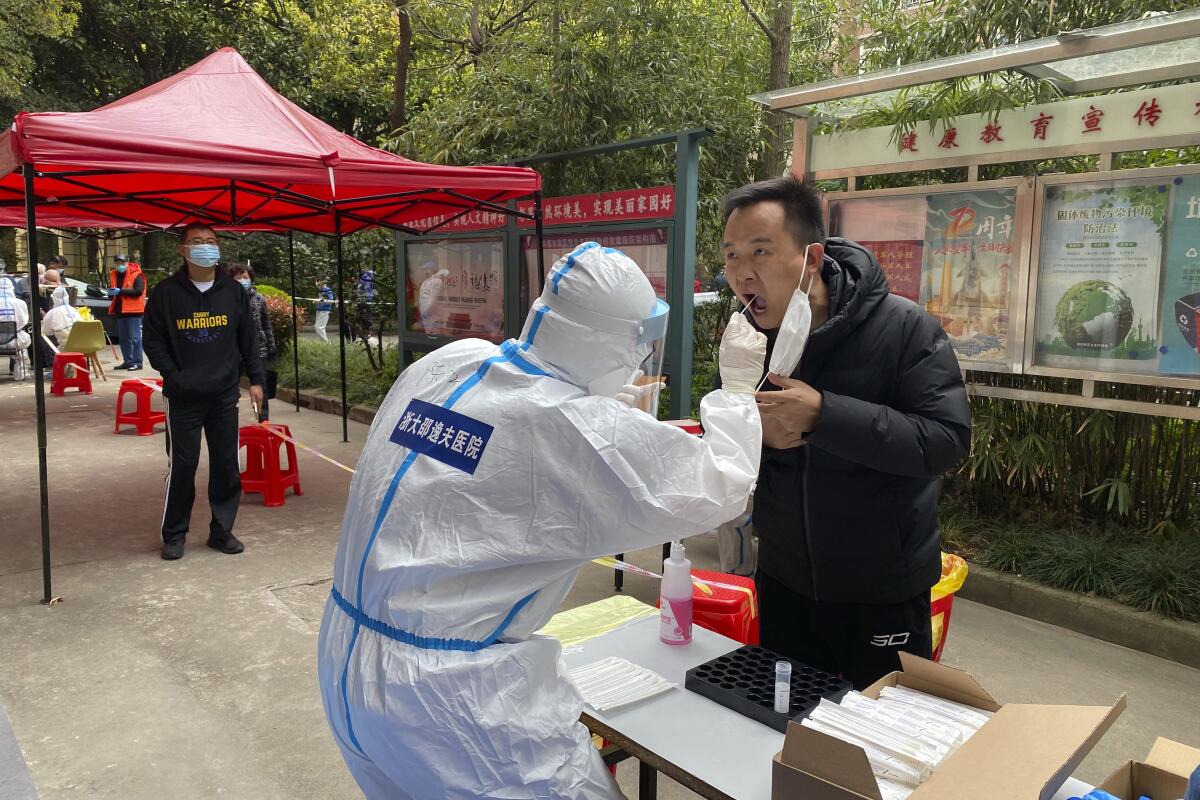
BEIJING â As millions of people in Shanghai line up for mass coronavirus testing, local authorities are promising tax refunds for shopkeepers in the locked-down metropolis and to keep the worldâs busiest port functioning to limit disruption to industry and trade.
This weekâs shutdown of most activity in Chinaâs most populous city to contain a COVID-19 outbreak jolted global financial markets that already were on edge about Russiaâs war on Ukraine, higher U.S. interest rates and a Chinese economic slowdown.
On Wednesday, the Chinese government reported 8,825 new infections nationwide, including 7,196 in people with no symptoms. That included 5,987 cases in Shanghai, only 329 of which exhibited symptoms.
Chinaâs case numbers in its latest infection surge are low compared with other major countries. But the ruling Communist Party is enforcing a âzero-toleranceâ strategy aimed at isolating every infected person.
Some 9.1 million of Shanghaiâs 26 million people had undergone virus testing by Wednesday, according to health officials. They said âpreventive disinfectionâ of apartment compounds, office buildings and shopping malls would be carried out.
Shanghai recorded more than 20,000 cases by Monday in its latest outbreak, according to state media.
Chinaâs health authorities reported two COVID deaths Saturday, the first since January 2021, as the country battles its worst outbreak in two years.
The government is trying to fine-tune its strategy in order to rein in job losses and other costs to the worldâs second-largest economy.
Shanghai officials announced tax refunds, cuts in rent and low-cost loans for small businesses, promising in a statement Tuesday to âstabilize jobsâ and âoptimize the business environment.â
The Shanghai port stayed open, and managers made extra efforts to ensure vessels âcan call normally,â state TV reported. The port serves the Yangtze River Delta, one of the worldâs busiest manufacturing regions, with thousands of makers of smartphone and auto components, appliances and other goods.
Operations at Shanghai airports and train stations were normal, according to the Paper online news outlet. Bus service into and out of the city was suspended earlier. Visitors are required to show a negative coronavirus test.
Even as China locks down cities in its worst coronavirus outbreak in two years, it could be seeking an exit from its âzero-toleranceâ COVID policy.
Abroad, the biggest potential impact on Chinaâs Asian neighbors and the rest of the world is likely to come from developments that chill demand in the worldâs most populous consumer market, economists said.
China is the biggest export market for all of its neighbors, including Japan and South Korea.
Chinese economic growth already was forecast to decline from last yearâs 8.1% because of a government campaign to cut corporate debt and other challenges unrelated to the pandemic. The ruling partyâs official target is 5.5%, but forecasters say even that looks hard to reach and will require stimulus spending.
âChina is the biggest single consumer of practically everything. It matters outside China,â said Rob Carnell, chief Asia economist for ING. âIf Chinaâs consumption is getting knocked down by COVID, it is going to be something that filters down the supply chain and affects countries in the region.â
Nanfu Wang adds her personal experiences to the documentary âIn the Same Breath.â
Officials are trying to defend Chinaâs role in global manufacturing supply lines by making sure goods get to customers, said Louis Kuijs, chief Asia-Pacific economist for S&P Global Ratings. He noted that after previous shutdowns, factories caught up with orders by working overtime.
âThe impact on supply chains is not as big as many outside observers fear,â Kuijs said. âThese restrictions tend to have a larger impact on spending and the demand side in China.â
The impact on Shanghai should be ârelatively mutedâ if the city contains its outbreak as the southern business center of Shenzhen did earlier, said Carnell.
Shenzhen, a tech and finance center of 17.5 million people, imposed a similar citywide shutdown in mid-March and reopened a week later.
Start your day right
Sign up for Essential California for the L.A. Times biggest news, features and recommendations in your inbox six days a week.
You may occasionally receive promotional content from the Los Angeles Times.
Employees of financial industries can work from home, while automakers and other big manufacturers can have workers live at factories in a âclosed loop systemâ that isolates them from contact with the outside.
General Motors and Volkswagen said their factories in Shanghai were operating normally. GM said in an email it was carrying out âcontingency plans on a global basisâ with suppliers to reduce COVID-related uncertainties.
Elsewhere, a total of 2,957 new coronavirus cases were reported in Jilin province in the northeast, including 1,032 with no symptoms. Access to the cities of Changchun and Jilin in that province has been suspended.
BMW Group said its factories in Changchun suspended production March 24 following an outbreak.
Outbreaks in Hong Kong and mainland China are testing the limits of a zero-tolerance COVID-19 policy.
In Shanghai, thousands of stock traders and other finance employees were sleeping in their offices to avoid contact with outsiders, the Daily Economic News reported. It said the Shanghai Stock Exchange was functioning normally with a reduced staff in a âclosed office.â
Nearby, the riverfront Bund, Shanghaiâs most famous neighborhood, was quiet and empty of its usual crowds of pedestrians.
Most restaurants were allowed only to serve diners who ordered via mobile phone and waited outside to collect meals.
A bigger threat to industry and trade looms if anti-disease restrictions disrupt activity at the Shanghai port. It handles the equivalent of 140,000 cargo containers a day.
âIf the port is closed, there would be even more dislocation, but itâs not like everything is fine now,â said Carnell. âItâs just yet another thing we wouldnât need.â
Last year, a one-month slowdown at another major port, Yantian in Shenzhen, caused a backlog of thousands of shipping containers and sent shockwaves through global supply chains.
More to Read
Sign up for Essential California
The most important California stories and recommendations in your inbox every morning.
You may occasionally receive promotional content from the Los Angeles Times.
